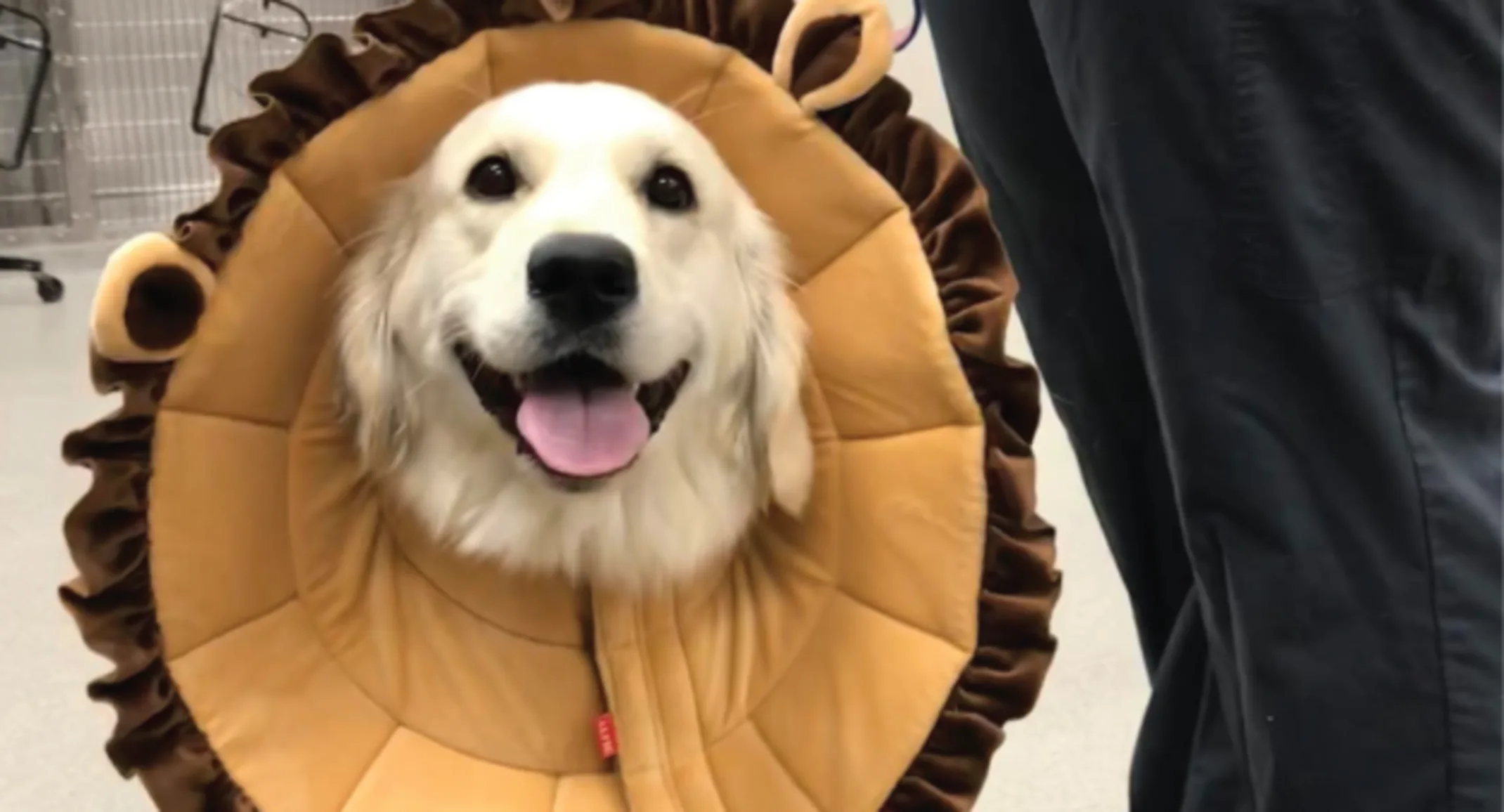7 E-Collar Tips for Dogs After Surgery
Dogs & Cats

If you’re a pet owner, chances are, you’ve heard of the “Cone of Shame” made famous by a certain amusing Golden Retriever in the movie Up. This term has a somewhat negative connotation, which we would like to dispel.
When your pet needs a cone:
These “cones” are really called Elizabethan Collars, or E-collars for short. While they look uncomfortable, pets adapt to them easier than you might think.
Most commonly, E-collars are prescribed to patients after surgery to prevent infection or opening the stitches caused by licking at the incision site. Ophthalmology and Dermatology patients may also need E-collars to prevent further injury or irritation from rubbing.
The length of the cone depends on the size of your pet’s face and how easily he/she can reach the affected area or incision.
Tips for adjusting to E-collar life
Remember: it’s just for now! While having your pet in an E-collar may cause some inconveniences or extra work on your part, in most cases it’s only while they’re recovering or going through treatment. They will need your help for the time being though:
Your pet may bump into things, so move any precious valuables in your house to higher shelves!
Harnesses can help with navigation – especially getting into cars and going up and down stairs.
You may even consider keeping your pet contained in a “safe space” to prevent injury, isolate them from other pets in the house, and keep an eye on them.
2. You may have to raise food bowls, or move them so that the collar isn’t bumping the wall. It takes time for them to get used to eating with it, but it is possible.
3. For kitties, covered litter boxes can be a challenge. Consider taking the tops off for them.
4. Be sure to keep the collar as clean as possible and your pet’s neck dry to avoid trapping moisture and causing hot spots and infections.
5. You can use medical gauze to tie the collar on, but using the pet’s own collar in the loops, if they wear one, may be more comfortable.
6. Keep the collar on at all times, unless advised otherwise.
7. Don’t be afraid to ask your veterinarian any questions. If your pet is having difficulty adjusting, or if you have a crafty pet who can Houdini their way out of the E-collar, your vet may be able to recommend other options or tricks they’ve learned through the years.
Don’t feel guilty!
Finally, during the time your pet has to wear an E-collar, you may experience feelings of guilt. Try not to! You’re doing a good thing by helping your pet heal more quickly and preventing an emergency trip back to the vet. Some pet owners even decorate their pet’s E-collar or find fun variations online!
Do your best to keep your pet comfortable, and remember: E-collars are necessary but temporary!
